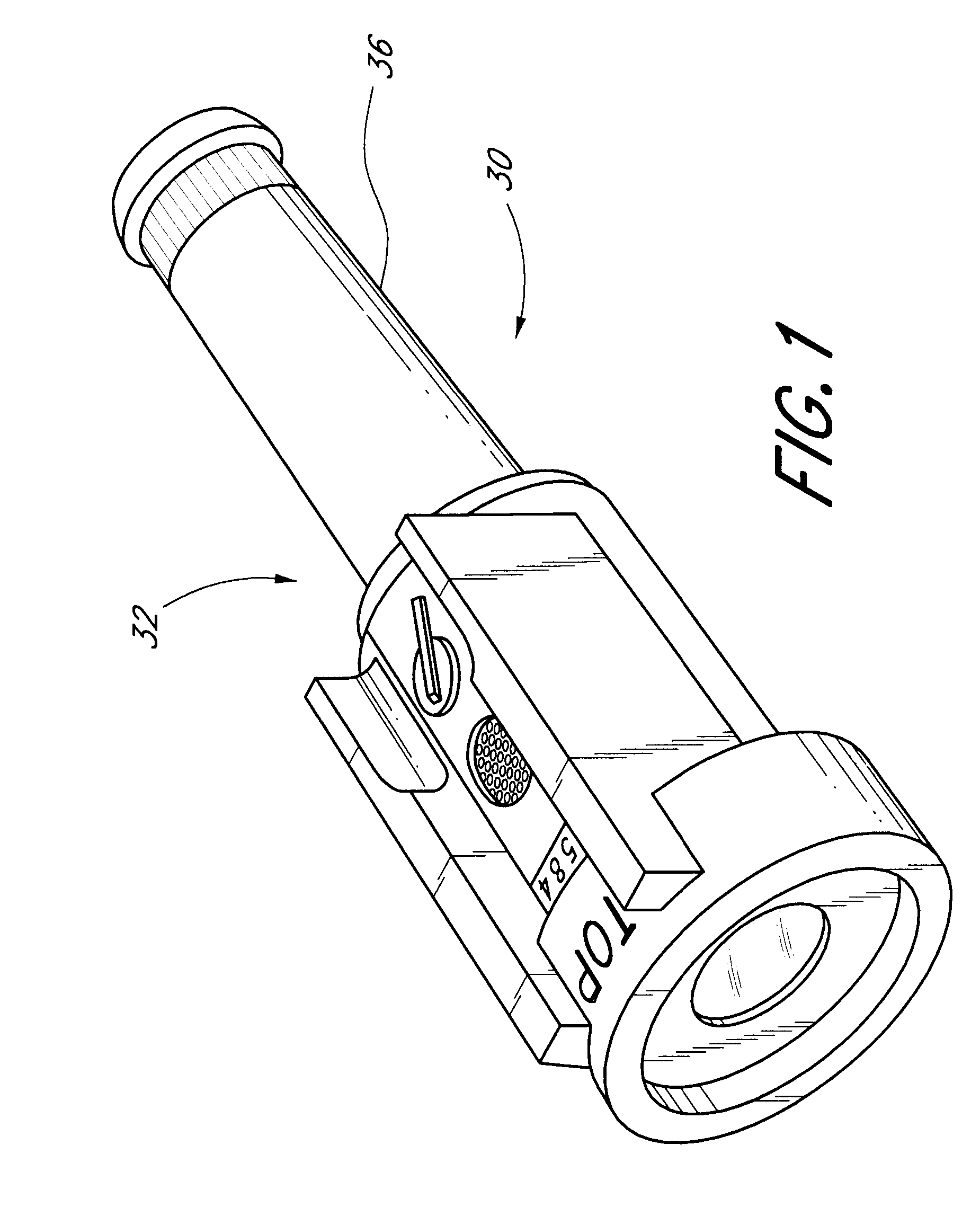Handheld heat detection device
- Summary
- Abstract
- Description
- Claims
- Application Information
AI Technical Summary
Problems solved by technology
Method used
Image
Examples
Embodiment Construction
With initial reference to FIGS. 1 and 2, an exemplifying infrared sensing device, indicated generally by the reference numeral 30, is illustrated therein. In general, the device 30 quickly and efficiently detects high temperature heat source using infrared radiation being emitted by the heat source, which allows a user to locate the heat source. The device 30 may also signal the intensity of infrared emissions from a heat source, thereby signaling an approximate temperature of the heat source. In one environment of use, the device 30 may be used by fire fighters as they search for hot spots through dense smoke, haze or direct sunlight. In other environments of use, the device 30 may detect the temperature of rail car wheels or identify high temperature embers following forest fires and the like. Of course, use of the present device 30 is not restricted to the above exemplifying environments of use and other applications will be readily apparent to those of ordinary skill in the art....
PUM
 Login to view more
Login to view more Abstract
Description
Claims
Application Information
 Login to view more
Login to view more - R&D Engineer
- R&D Manager
- IP Professional
- Industry Leading Data Capabilities
- Powerful AI technology
- Patent DNA Extraction
Browse by: Latest US Patents, China's latest patents, Technical Efficacy Thesaurus, Application Domain, Technology Topic.
© 2024 PatSnap. All rights reserved.Legal|Privacy policy|Modern Slavery Act Transparency Statement|Sitemap



